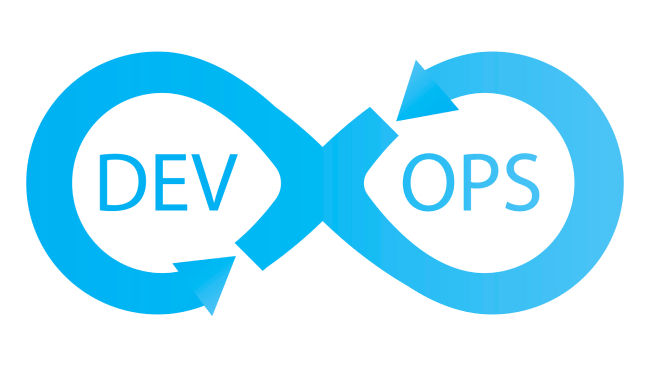In today’s fast-paced business environment, an effective project is more than just a series of tasks; it is the lifeblood of an organization’s strategic objectives. At the heart of every successful project lies a well-structured project charter, a foundational document that outlines the project’s vision, scope, objectives, and stakeholders. A comprehensive project charter not only serves as a roadmap for project execution but also ensures alignment among team members and stakeholders, mitigating risks and enhancing communication throughout the project lifecycle. This article will explore the essential steps for crafting a robust project charter, providing insights and best practices that will empower project managers to set their projects on a path to success from inception to completion. Whether you are a seasoned professional or new to project management, understanding these key components will equip you with the tools necessary to drive your projects forward with clarity and purpose.
Table of Contents
- Understanding the Purpose and Importance of a Project Charter
- Key Components to Include in Your Project Charter
- Effective Stakeholder Engagement Strategies for Charter Development
- Best Practices for Reviewing and Finalizing Your Project Charter
- To Conclude
Understanding the Purpose and Importance of a Project Charter
The project charter serves as a foundational document that outlines the essence of the project, providing direction and clarity for all stakeholders involved. Its primary purpose lies in defining the project’s objectives, scope, and deliverables, ensuring that everyone is aligned and has a shared understanding of what success looks like. This document not only establishes the authority of the project manager but also acts as a critical reference point throughout the project lifecycle, helping to mitigate risks and manage expectations effectively.
Moreover, the significance of a project charter extends beyond mere documentation; it fosters stakeholder engagement and accountability by detailing roles and responsibilities. By including key elements such as project goals, limitations, and stakeholder identification, the charter promotes effective communication and facilitates decision-making. Key components that should be highlighted include:
- Project Objectives: Clear and measurable goals.
- Scope Statement: Defines what is included and excluded.
- Stakeholder List: Identifies who is involved and their roles.
- Assumptions and Constraints: Factors that could impact project execution.
Key Components to Include in Your Project Charter
A well-structured project charter serves as the foundational framework for any successful project. To ensure clarity and direction, it should include several crucial components. First, start with a clear Project Title that encapsulates the essence of the initiative. Follow with an Executive Summary, offering a succinct overview that outlines the project’s purpose and objectives. Other important elements are the Project Scope, which delineates deliverables, timelines, and constraints, and the Stakeholder Identification section that highlights the individuals and groups impacted by the project. Additionally, a Project Objectives statement should state measurable outcomes to track progress effectively.
Moreover, it is wise to include a Roles and Responsibilities matrix, detailing who is accountable for specific tasks, which helps in assigning clear ownership. A Budget Overview encapsulating estimated costs and resources helps in financial planning and approval processes. It may also be beneficial to outline Risk Assessment factors, identifying potential challenges and mitigation strategies. Lastly, always conclude with a Sign-Off Section where key stakeholders and project sponsors can indicate approval, reinforcing their commitment to the project’s success.
Effective Stakeholder Engagement Strategies for Charter Development
Engaging stakeholders effectively is pivotal in the charter development process, as their insights ensure the project aligns with organizational goals and addresses any potential concerns. To foster this engagement, it is essential to identify key stakeholders early on and categorize them based on their influence and interest in the project. Consider hosting initial meetings to discuss the project’s vision and gather feedback, ensuring that stakeholders feel valued and heard. Regularly updating stakeholders through newsletters or dedicated project dashboards can maintain interest and transparency as the project evolves.
Utilizing a structured approach can significantly enhance stakeholder collaboration. Establish clear channels of communication and tailor your engagement strategies to suit different stakeholder groups by considering their needs and preferences. For instance, you might implement:
- Surveys to collect quantitative data on stakeholder perspectives.
- Focus groups to dive deeper into stakeholder opinions and explore innovative solutions.
- Workshops to facilitate brainstorming sessions that harness collective problem-solving skills.
Additionally, creating a stakeholder matrix can aid in visualizing and managing their interactions effectively. Below is an example of a stakeholder matrix:
| Stakeholder | Role | Interest Level | Communication Method |
|---|---|---|---|
| Project Sponsor | Decision Maker | High | Monthly Updates |
| Team Members | Implemented | Medium | Weekly Meetings |
| Clients | End Users | High | Bi-weekly Reviews |
Best Practices for Reviewing and Finalizing Your Project Charter
To ensure that your project charter serves its purpose effectively, it’s critical to gather input from key stakeholders during the review process. Start by organizing a series of collaborative review meetings where diverse perspectives can contribute to refining the document. Encourage participants to focus on clarity, feasibility, and alignment with organizational goals. Additionally, consider these essential guidelines:
- Ensure Comprehensive Coverage: Confirm that all key sections, including objectives, scope, and stakeholders, are thoroughly addressed.
- Encourage Constructive Feedback: Foster an environment where participants can freely share their thoughts on potential risks and assumptions.
- Clarify Roles and Responsibilities: Make sure each team member understands their role in relation to the project charter.
Once initial feedback is incorporated, the finalization phase should focus on clarity and conciseness. Use clear, jargon-free language to avoid misunderstandings, and format the document to enhance readability. A well-structured project charter should include the following essential components:
| Component | Description |
|---|---|
| Project Title | Brief and descriptive title reflecting the project’s focus. |
| Goals and Objectives | Clear and measurable targets to assess project success. |
| Scope | Definition of what is included and excluded from the project. |
| Stakeholders | List of individuals or groups with vested interests in the project. |
| Timeline | Estimated duration and key milestones for project delivery. |
To Conclude
a well-crafted project charter serves as the cornerstone of successful project management, providing clarity and direction to all stakeholders involved. By following the essential steps outlined in this article—clearly defining objectives, identifying stakeholders, establishing a governance structure, and detailing scope and deliverables—you can create a robust framework that not only aligns team efforts but also enhances accountability and communication.
Remember, the project charter is not merely a document; it is a strategic tool that fosters alignment and drives project success. As you embark on your next project, invest the time and effort necessary to develop a comprehensive charter. Doing so will lay the groundwork for effective execution, mitigate risks early on, and ultimately guide your team toward achieving its goals. By committing to this foundational step, you are poised to elevate your project management practices and deliver lasting results.






